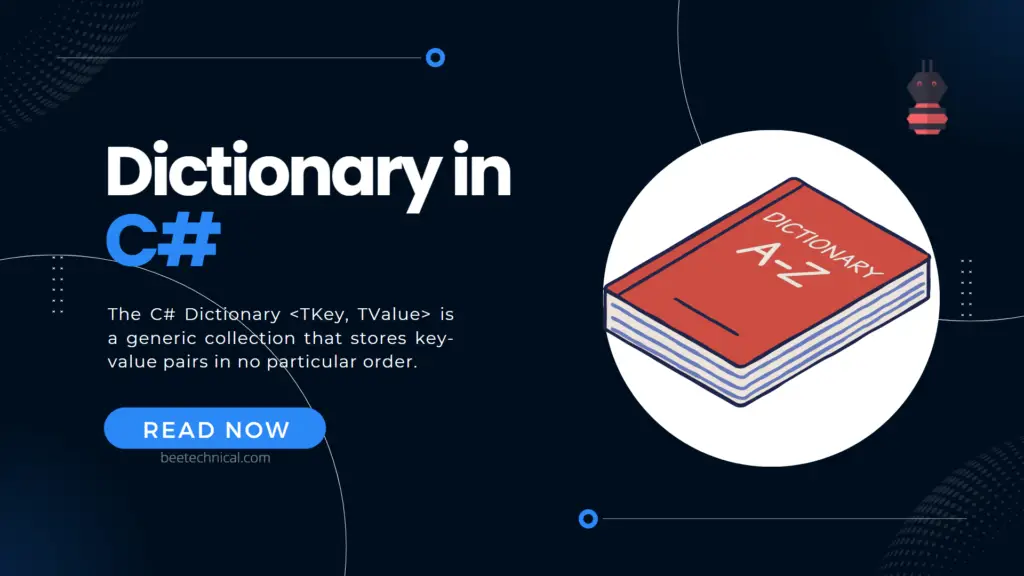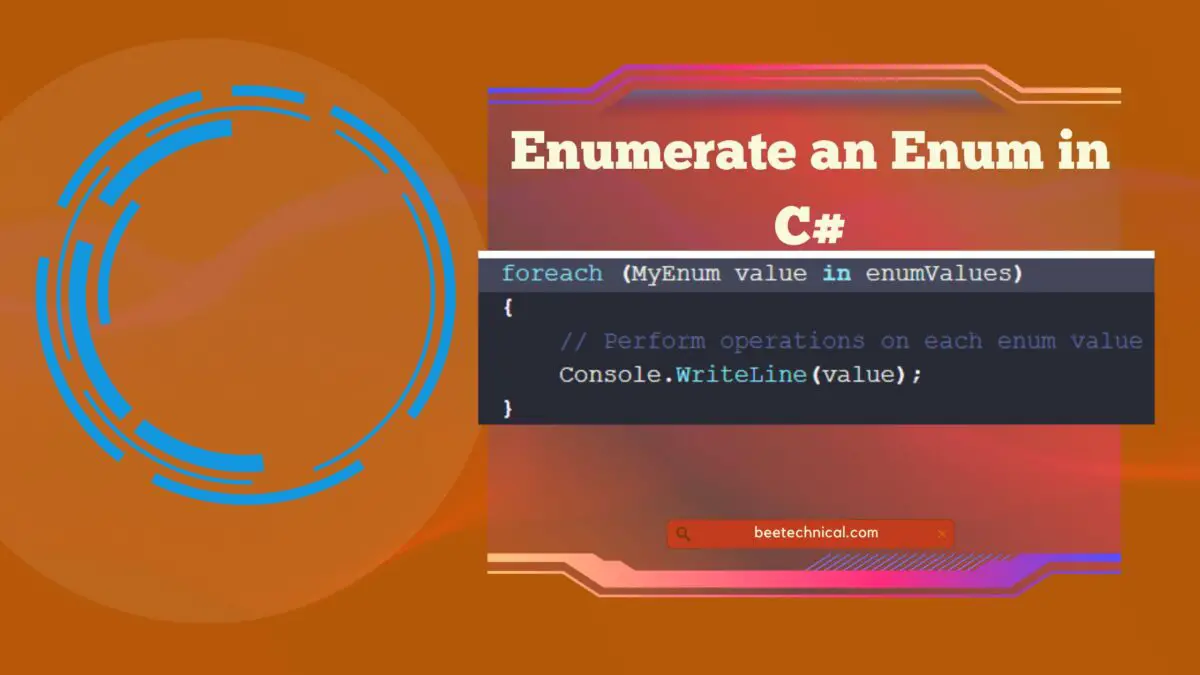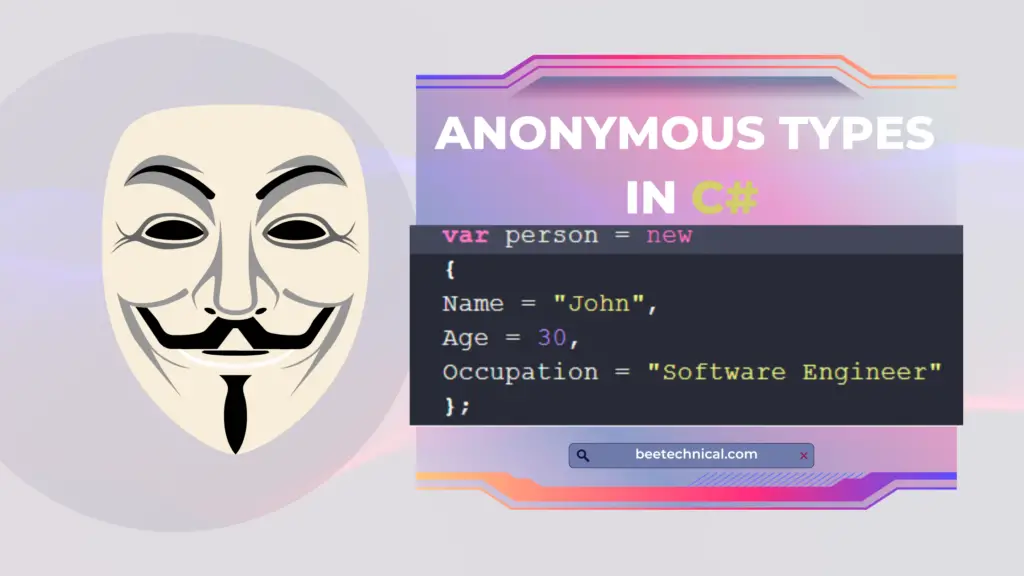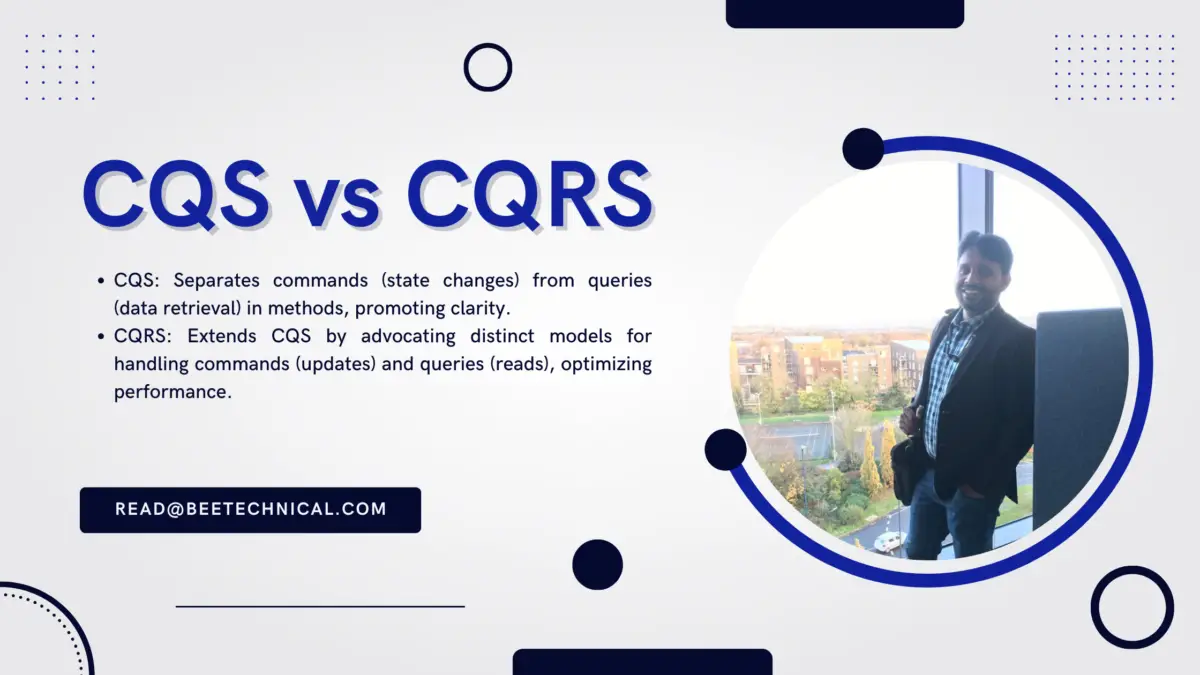Looking for LINQ interview questions to help you prepare for your next job interview? Look no further! This comprehensive guide features a range of commonly asked LINQ interview questions along with detailed answers to help you ace your interview.
Whether you’re a seasoned developer or just starting out, this guide is a must-read for anyone looking to advance their LINQ skills and land their dream job. c
With expert insights and real-world examples, you’ll be able to demonstrate your expertise and stand out from the competition. So why wait? Start reading now and get ready to impress your interviewer with your LINQ knowledge!
What is LINQ and what does it stand for?
LINQ stands for Language-Integrated Query. It is a Microsoft .NET Framework component that provides a unified programming model for querying and manipulating data from different data sources, including SQL databases, XML documents, and in-memory data structures, using a common set of language extensions. LINQ enables developers to write declarative, strongly-typed queries in C# or Visual Basic, rather than using traditional imperative code.
What is the syntax for creating a LINQ query?
The syntax for creating a LINQ query involves the use of two main keywords: “from” and “select”.
var result = from item in collection
where condition
select item;
In this example, “collection” is the data source, “item” is the iteration variable that represents each item in the collection, and “condition” is a Boolean expression that filters the items based on certain criteria. The “select” keyword is used to specify the result or projection of the query, which can be a single value or a new object that contains one or more properties derived from the source data. The “var” keyword is used to declare the type of the query result, which is inferred by the compiler based on the context.
What is deferred execution in LINQ?
Deferred execution is a key feature of LINQ that allows queries to be evaluated lazily, or only when their results are actually needed. Instead of executing the query immediately when it is defined, a LINQ query is only executed when it is enumerated, usually by calling a method such as ToList(), ToArray(), or FirstOrDefault().
This means that LINQ queries are not evaluated until the results are needed, which can help to improve performance and reduce memory usage. For example, if you have a large data source, you can use LINQ to filter and sort the data, but only retrieve the specific items that are needed for a particular operation, rather than loading the entire dataset into memory at once.
Deferred execution also allows LINQ queries to be composed and modified dynamically, by chaining together multiple operations or adding additional filters or sorting criteria as needed. This makes LINQ a powerful tool for working with complex data sources and allows developers to write more concise and maintainable code. However, it’s important to be aware of the potential performance implications of deferred execution and to avoid creating unnecessary or inefficient queries.
Example of Deferred Execution in Linq
// Define a LINQ query using deferred execution
var query = Enumerable.Range(1, 10)
.Where(x => x % 2 == 0)
.Select(x => x * x);
// Output the query definition (without executing it)
Console.WriteLine(query);
// Enumerate the query and output the results
foreach (var item in query)
{
Console.WriteLine(item);
}
In this example, we define a LINQ query using the Enumerable.Range() method to generate a sequence of numbers from 1 to 10, the Where() method to filter the sequence to even numbers, and the Select() method to square each even number.
However, note that the query is not actually executed until we enumerate it using a foreach loop. Until that point, the query definition is just a set of instructions that describe how to generate the sequence of results.
We demonstrate this by outputting the query definition to the console using the Console.WriteLine() method. When we run the program, we see that the output is:
System.Linq.Enumerable+WhereSelectEnumerableIterator`2[System.Int32,System.Int32]
This output shows us that the query has been defined, but not executed yet.
Finally, we enumerate the query using a foreach loop and output each result to the console. This causes the query to be executed, and produces the following output:
4
16
36
64
100
This example illustrates the power of deferred execution in LINQ, which allows us to define complex queries without actually executing them until we need the results. This can be especially useful when working with large datasets or slow data sources, as it allows us to optimize queries for performance and memory usage.
What are the two types of LINQ providers?
There are two main types of LINQ providers:
- Local LINQ providers: These providers execute queries on local, in-memory data structures such as arrays, lists, and dictionaries. Local LINQ providers are included in the .NET Framework and are available for use with any compatible data source. Examples include LINQ to Objects, which allows you to query in-memory collections of objects, and LINQ to XML, which allows you to query XML documents.
- Remote LINQ providers: These providers execute queries on remote data sources such as SQL databases, web services, or other external systems. Remote LINQ providers typically require a specialized implementation or adapter that can translate LINQ queries into the appropriate query language or API for the target system. Examples include LINQ to SQL, which allows you to query SQL Server databases using LINQ syntax, and LINQ to Entities, which allows you to query Entity Framework, data models.
Both types of LINQ providers allow you to write LINQ queries in a consistent and intuitive manner, regardless of the underlying data source. This can help to simplify code and reduce development time, as well as improve performance by optimizing queries for the specific data source being used.
What is the difference between IQueryable and IEnumerable?
IQueryable and IEnumerable are two interfaces in LINQ that represent collections of data. The main difference between them is that IQueryable is designed for querying remote data sources (such as databases), while IEnumerable is designed for querying local in-memory data (such as collections).
IEnumerable
IEnumerable is the simpler of the two interfaces, and provides a basic set of methods for iterating over a collection of objects. It is used for in-memory collections such as arrays, lists, and dictionaries.
For example, suppose we have a list of integers and we want to filter out all the even numbers:
List<int> numbers = new List<int> { 1, 2, 3, 4, 5, 6, 7, 8, 9, 10 };
var query = numbers.Where(x => x % 2 == 0);
foreach (var number in query)
{
Console.WriteLine(number);
}
In this example, we define a list of integers and create a LINQ query using the Where() method to filter out all the even numbers. We then iterate over the results using a foreach loop and output each number to the console.
IQueryable
IQueryable, on the other hand, is used for querying remote data sources such as databases or web services. It extends IEnumerable and adds additional functionality for querying data in a way that is optimized for the specific data source.
For example, suppose we have a database table called Customers, and we want to retrieve all the customers whose names contain the word “John”. We can use IQueryable to write a LINQ query that is translated into SQL and executed on the database:
using (var context = new MyDbContext())
{
var query = context.Customers.Where(x => x.Name.Contains("John"));
foreach (var customer in query)
{
Console.WriteLine(customer.Name);
}
}
In this example, we create a LINQ query using the Where() method on the Customers table in our database. This query is not executed immediately, but is instead deferred until we enumerate it using a foreach loop. When we do enumerate it, the query is translated into SQL and executed on the database, returning only the relevant data.
Overall, IQueryable and IEnumerable provide different levels of functionality for querying data, depending on whether the data source is local or remote. Understanding the differences between the two interfaces can help you choose the appropriate one for your specific use case.
What is the difference between Where() and Select() in LINQ?
Where() and Select() are both methods in LINQ that are used to transform data, but they serve different purposes.
Where() is used to filter a sequence of elements based on a specified condition. It returns a new sequence that contains only the elements that satisfy the condition.
For example, suppose we have a list of integers and we want to filter out all the even numbers:
List<int> numbers = new List<int> { 1, 2, 3, 4, 5, 6, 7, 8, 9, 10 };
var query = numbers.Where(x => x % 2 == 0);
foreach (var number in query)
{
Console.WriteLine(number);
}
In this example, we use the Where() method to create a new sequence that contains only the even numbers from the original list. The lambda expression x => x % 2 == 0 is the condition that determines whether each element should be included in the new sequence.
Select() is used to transform a sequence of elements into a new sequence by applying a function to each element. It returns a new sequence that contains the result of applying the function to each element.
For example, suppose we have a list of strings that represent names, and we want to create a new list that contains only the first letter of each name:
List<string> names = new List<string> { "Alice", "Bob", "Charlie", "David" };
var query = names.Select(x => x[0]);
foreach (var letter in query)
{
Console.WriteLine(letter);
}
In this example, we use the Select() method to create a new sequence that contains only the first letter of each name in the original list. The lambda expression x => x[0] is the function that extracts the first letter from each name.
Where() is used to filter a sequence based on a condition, while Select() is used to transform a sequence by applying a function to each element.
What is the difference between Single() and First() in LINQ?
Both Single() and First() are LINQ extension methods used to retrieve a single element from a sequence. However, there are some key differences between them.
First() returns the first element in a sequence that satisfies a specified condition, or the first element in the sequence if no condition is specified. If the sequence is empty, First() throws an exception.
List<int> numbers = new List<int> { 1, 3, 5, 2, 7, 4, 6, 9 };
var result = numbers.First(x => x % 2 == 0);
Console.WriteLine(result); // Outputs 2
List<string> fruits = new List<string> { "banana", "apple", "orange" };
var result = fruits.Single(x => x == "apple");
Console.WriteLine(result); // Outputs "apple"
Single(), on the other hand, returns the only element in a sequence that satisfies a specified condition, or throws an exception if there is more than one element in the sequence that satisfies the condition. If no element satisfies the condition or the sequence is empty, Single() also throws an exception.
What is the difference between Join() and GroupJoin() in LINQ?
Both Join() and GroupJoin() are LINQ extension methods used to combine data from two or more sequences. However, there are some key differences between them.
Join() is used to combine two sequences based on a common key, and returns a new sequence that contains elements from both sequences where the key values match. The resulting sequence is flattened and does not contain any grouping.
List<Employee> employees = new List<Employee>
{
new Employee { Id = 1, Name = "Alice", DepartmentId = 1 },
new Employee { Id = 2, Name = "Bob", DepartmentId = 1 },
new Employee { Id = 3, Name = "Charlie", DepartmentId = 2 },
new Employee { Id = 4, Name = "David", DepartmentId = 2 }
};
List<Department> departments = new List<Department>
{
new Department { Id = 1, Name = "Sales" },
new Department { Id = 2, Name = "Marketing" }
};
var query = employees.Join(
departments,
employee => employee.DepartmentId,
department => department.Id,
(employee, department) => new
{
EmployeeName = employee.Name,
DepartmentName = department.Name
});
foreach (var item in query)
{
Console.WriteLine("{0} works in the {1} department", item.EmployeeName, item.DepartmentName);
}
GroupJoin() is used to combine two sequences based on a common key, and returns a new sequence of grouped elements. The resulting sequence contains a group for each key value, and each group contains all the elements from the second sequence that match the key value.
var query = departments.GroupJoin(
employees,
department => department.Id,
employee => employee.DepartmentId,
(department, employees) => new
{
DepartmentName = department.Name,
Employees = employees.Select(x => x.Name)
});
foreach (var item in query)
{
Console.WriteLine("Employees in the {0} department:", item.DepartmentName);
foreach (var employeeName in item.Employees)
{
Console.WriteLine("- {0}", employeeName);
}
}
How do you perform a left outer join in LINQ?
To perform a left outer join in LINQ, you can use the GroupJoin() method along with the DefaultIfEmpty() method to include the items from the left sequence that do not have any matching items in the right sequence.
List<Employee> employees = new List<Employee>
{
new Employee { Id = 1, Name = "Alice", DepartmentId = 1 },
new Employee { Id = 2, Name = "Bob", DepartmentId = 1 },
new Employee { Id = 3, Name = "Charlie", DepartmentId = 2 },
new Employee { Id = 4, Name = "David", DepartmentId = 2 },
new Employee { Id = 5, Name = "Eva", DepartmentId = 3 }
};
List<Department> departments = new List<Department>
{
new Department { Id = 1, Name = "Sales" },
new Department { Id = 2, Name = "Marketing" }
};
var query = departments.GroupJoin(
employees,
department => department.Id,
employee => employee.DepartmentId,
(department, employees) => new
{
DepartmentName = department.Name,
Employees = employees.Select(x => x.Name).DefaultIfEmpty()
});
foreach (var item in query)
{
Console.WriteLine("Employees in the {0} department:", item.DepartmentName);
foreach (var employeeName in item.Employees)
{
Console.WriteLine("- {0}", employeeName ?? "No employees found");
}
}
The resulting query will return all the departments and their corresponding employees, and include the departments that do not have any employees with a default value.
How do you perform a right outer join in LINQ?
To perform a right outer join in LINQ, you can use a combination of the GroupJoin() and SelectMany() methods to join the right sequence with the matching items in the left sequence, and then add the items from the right sequence that do not have any matching items.
List<Employee> employees = new List<Employee>
{
new Employee { Id = 1, Name = "Alice", DepartmentId = 1 },
new Employee { Id = 2, Name = "Bob", DepartmentId = 1 },
new Employee { Id = 3, Name = "Charlie", DepartmentId = 2 },
new Employee { Id = 4, Name = "David", DepartmentId = 2 },
new Employee { Id = 5, Name = "Eva", DepartmentId = 3 }
};
List<Department> departments = new List<Department>
{
new Department { Id = 1, Name = "Sales" },
new Department { Id = 2, Name = "Marketing" },
new Department { Id = 3, Name = "Finance" }
};
var query = employees.GroupJoin(
departments,
employee => employee.DepartmentId,
department => department.Id,
(employee, departments) => new
{
EmployeeName = employee.Name,
DepartmentName = departments.Select(x => x.Name).DefaultIfEmpty("No department found")
})
.SelectMany(x => x.DepartmentName, (employee, department) => new
{
EmployeeName = employee.EmployeeName,
DepartmentName = department
});
foreach (var item in query)
{
Console.WriteLine("{0} works in the {1} department", item.EmployeeName, item.DepartmentName);
}
The resulting query will return all the employees and their corresponding departments (if any), and include the departments that do not have any employees with a default value.
How do you perform an inner join in LINQ?
To perform an inner join in LINQ, you can use the Join method. The Join method takes in four parameters:
- The first collection to join.
- The second collection to join.
- A lambda expression that defines the join condition.
- A lambda expression that defines the output projection.
List<Employee> employees = new List<Employee>
{
new Employee { Id = 1, Name = "Alice", DepartmentId = 1 },
new Employee { Id = 2, Name = "Bob", DepartmentId = 1 },
new Employee { Id = 3, Name = "Charlie", DepartmentId = 2 },
new Employee { Id = 4, Name = "David", DepartmentId = 2 },
new Employee { Id = 5, Name = "Eva", DepartmentId = 3 }
};
List<Department> departments = new List<Department>
{
new Department { Id = 1, Name = "Sales" },
new Department { Id = 2, Name = "Marketing" },
new Department { Id = 3, Name = "Finance" }
};
var query = employees.Join(
departments,
employee => employee.DepartmentId,
department => department.Id,
(employee, department) => new
{
EmployeeName = employee.Name,
DepartmentName = department.Name
});
foreach (var item in query)
{
Console.WriteLine("{0} works in the {1} department", item.EmployeeName, item.DepartmentName);
}
In this example, we use the Join method to join the departments and employees lists based on their Id properties. The resulting query will return only the employees that have a matching department, and their corresponding department name.
What is the difference between Distinct() and GroupBy() in LINQ?
Distinct() and GroupBy() are two methods in LINQ that operate on collections to reduce or modify the number of elements in them, but they are used for different purposes.
The Distinct() method returns a new collection that contains only the unique elements from the original collection. It does not modify the original collection and preserves the order of the elements.
int[] numbers = { 1, 2, 3, 3, 2, 1, 4 };
var uniqueNumbers = numbers.Distinct();
// Result: { 1, 2, 3, 4 }
On the other hand, the GroupBy() method groups the elements of a collection based on a specified key selector, and returns a collection of groups. Each group contains all the elements in the original collection that share the same key value.
string[] names = { "Alice", "Bob", "Charlie", "David", "Eva", "Frank" };
var nameGroups = names.GroupBy(name => name[0]);
// Result: { { "Alice", "Adam" }, { "Bob" }, { "Charlie" }, { "David" }, { "Eva" }, { "Frank" } }
What is the difference between Any() and All() in LINQ?
Any() and All() are two methods in LINQ that operate on collections and return a boolean value based on some condition, but they are used for different purposes.
The Any() method returns a boolean value that indicates whether the collection contains any elements that satisfy a specified condition. It returns true if at least one element satisfies the condition, and false otherwise. Here’s an example:
int[] numbers = { 1, 2, 3, 4, 5 };
bool containsEvenNumber = numbers.Any(n => n % 2 == 0);
// Result: true
On the other hand, the All() method returns a boolean value that indicates whether all elements in the collection satisfy a specified condition. It returns true if all elements satisfy the condition, and false otherwise.
int[] numbers = { 2, 4, 6, 8, 10 };
bool allEvenNumbers = numbers.All(n => n % 2 == 0);
// Result: true
How do you use the Take() and Skip() methods in LINQ?
Take() and Skip() are two methods in LINQ that are used to select a subset of elements from a collection based on their position or index.
The Take() method is used to select the first n elements from a collection. It takes an integer parameter that specifies the number of elements to take, and returns a new collection that contains only those elements.
int[] numbers = { 1, 2, 3, 4, 5 };
var firstThreeNumbers = numbers.Take(3);
// Result: { 1, 2, 3 }
The Skip() method, on the other hand, is used to skip the first n elements from a collection and return the remaining elements. It takes an integer parameter that specifies the number of elements to skip, and returns a new collection that contains only the remaining elements.
int[] numbers = { 1, 2, 3, 4, 5 };
var lastTwoNumbers = numbers.Skip(3);
// Result: { 4, 5 }
Both Take() and Skip() can be used together to select a subset of elements from a collection starting from a specified index. For example, to select the elements from index 2 to 5, we can use the following LINQ query:
int[] numbers = { 1, 2, 3, 4, 5 };
var lastTwoNumbers = numbers.Skip(3);
// Result: { 4, 5 }
What is the difference between Union() and Concat() in LINQ?
Union() and Concat() are two methods in LINQ that are used to combine two or more collections, but they operate differently and return different results.
The Concat() method is used to combine two or more collections into a single collection. It takes two or more collections as parameters and returns a new collection that contains all the elements from each collection.
int[] numbers1 = { 1, 2, 3 };
int[] numbers2 = { 4, 5, 6 };
var concatenatedNumbers = numbers1.Concat(numbers2);
// Result: { 1, 2, 3, 4, 5, 6 }
The Union() method, on the other hand, is used to combine two or more collections into a single collection and remove any duplicates. It takes two or more collections as parameters and returns a new collection that contains all the distinct elements from each collection.
int[] numbers1 = { 1, 2, 3 };
int[] numbers2 = { 3, 4, 5 };
var uniqueNumbers = numbers1.Union(numbers2);
// Result: { 1, 2, 3, 4, 5 }
What is the difference between Count() and LongCount() in LINQ?
Count() and LongCount() are two methods in LINQ that are used to count the number of elements in a collection, but they have different return types.
The Count() method returns the number of elements in a collection as an int data type. If the number of elements in the collection is greater than int.MaxValue (2,147,483,647), Count() will throw an OverflowException.
The LongCount() method, on the other hand, returns the number of elements in a collection as a long data type. This means that LongCount() can handle larger collections than Count() without throwing an exception.
int[] numbers = { 1, 2, 3, 4, 5 };
int count = numbers.Count(); // Result: 5
long longCount = numbers.LongCount(); // Result: 5
How do you use the Sum() and Average() methods in LINQ?
The Sum() and Average() methods in LINQ are used to perform calculations on numeric values in a collection.
The Sum() method calculates the sum of all numeric values in a collection. It can be used with any numeric data type such as int, float, double, etc.
int[] numbers = { 1, 2, 3, 4, 5 };
int sum = numbers.Sum(); // Result: 15
The Average() method calculates the average of all numeric values in a collection. It can also be used with any numeric data type.
int[] numbers = { 1, 2, 3, 4, 5 };
double average = numbers.Average(); // Result: 3
Both Sum() and Average() methods can be used with LINQ queries to perform calculations on specific elements in a collection based on certain conditions.
List<Product> products = new List<Product>();
// add products to the list...
double totalCost = products.Where(p => p.Category == "Electronics")
.Sum(p => p.Price);
double averagePrice = products.Where(p => p.Category == "Clothing")
.Average(p => p.Price);
List<Product> products = new List<Product>();
// add products to the list...
double totalCost = products.Where(p => p.Category == "Electronics")
.Sum(p => p.Price);
double averagePrice = products.Where(p => p.Category == "Clothing")
.Average(p => p.Price);
What is the difference between Max() and Min() in LINQ?
Both Max() and Min() methods can be used with LINQ queries to find the maximum and minimum values in a collection based on certain conditions.
List<Product> products = new List<Product>();
// add products to the list...
double maxPrice = products.Where(p => p.Category == "Electronics")
.Max(p => p.Price);
double minPrice = products.Where(p => p.Category == "Clothing")
.Min(p => p.Price);
In this example, we use the Max() method with a LINQ query to find the maximum price of all products in the Electronics category, and the Min() method with a LINQ query to find the minimum price of all products in the Clothing category.
What is the difference between ToList() and ToArray() in LINQ?
ToList() method returns a List<T> object, which is a dynamic collection of elements that can be added to or removed from the list. ToList() method can be useful when you need to modify the collection of elements or add new elements to the list after it has been created.
On the other hand, ToArray() method returns an array of elements of the specified type. The resulting array is fixed in size and cannot be resized or modified once it has been created. ToArray() method is useful when you need to pass the collection of elements to a method or API that requires an array as input.
int[] numbers = { 1, 2, 3, 4, 5 };
List<int> list = numbers.ToList(); // convert array to list
int[] array = list.ToArray(); // convert list to array
What is the difference between ToLookup() and ToDictionary() in LINQ?
ToLookup() method returns an ILookup<TKey, TElement> object, which is a collection of key-value pairs where the keys can have multiple values. When a key has multiple values, ToLookup() groups the values into a IEnumerable<TElement> sequence under the corresponding key. ToLookup() can be useful when you need to group a sequence of elements by a certain key and want to be able to retrieve all the values associated with that key.
var numbers = new int[] { 1, 2, 3, 4, 5, 6 };
var lookup = numbers.ToLookup(x => x % 2 == 0 ? "even" : "odd");
foreach (var group in lookup)
{
Console.WriteLine("{0} numbers: {1}", group.Key, string.Join(",", group));
}
In this example, the ToLookup() method is used to group the numbers into two groups: odd and even. The resulting lookup object is an ILookup<string, int> where the keys are “even” and “odd”, and the values are sequences of int values.
On the other hand, ToDictionary() method returns a Dictionary<TKey, TValue> object, which is a collection of key-value pairs where each key can have only one value. When a key has multiple values, ToDictionary() throws an exception. ToDictionary() can be useful when you need to map a sequence of elements to a unique key-value pair.
var fruits = new string[] { "apple", "banana", "cherry", "apple" };
var dict = fruits.ToDictionary(x => x, x => x.Length);
foreach (var kvp in dict)
{
Console.WriteLine("{0} ({1} letters)", kvp.Key, kvp.Value);
}
In this example, the ToDictionary() method is used to create a dictionary where the keys are the fruit names and the values are the length of the fruit names. Since there are two “apple” values in the sequence, ToDictionary() throws an exception.
How do you use the TakeWhile() and SkipWhile() methods in LINQ?
The TakeWhile() method returns elements from the start of a sequence until the specified condition is no longer true for an element. It takes a predicate function as a parameter that defines the condition for which elements to take.
var numbers = new int[] { 1, 2, 3, 4, 5, 6 };
var result = numbers.TakeWhile(x => x < 4);
foreach (var num in result)
{
Console.Write(num + " "); // Output: 1 2 3
}
The SkipWhile() method, on the other hand, skips elements from the start of a sequence until the specified condition is no longer true for an element, and returns the remaining elements. It also takes a predicate function as a parameter that defines the condition for which elements to skip.
var numbers = new int[] { 1, 2, 3, 4, 5, 6 };
var result = numbers.SkipWhile(x => x < 4);
foreach (var num in result)
{
Console.Write(num + " "); // Output: 4 5 6
}
Both TakeWhile() and SkipWhile() methods are useful for working with ordered sequences where you want to extract a subset of the elements based on a certain condition.
How do you use the Zip() method in LINQ?
The Zip() method is a LINQ extension method that is used to combine two sequences element-by-element, where each element in the resulting sequence contains the corresponding elements from both sequences. The method takes two parameters: the first is the sequence to be combined with, and the second is a function that combines the elements of the two sequences.
var numbers = new int[] { 1, 2, 3, 4 };
var letters = new string[] { "A", "B", "C", "D" };
var result = numbers.Zip(letters, (n, l) => $"{n}{l}");
foreach (var item in result)
{
Console.Write(item + " "); // Output: 1A 2B 3C 4D
}
In this example, the Zip() method is used to combine the numbers and letters sequences element-by-element, where each element in the resulting sequence contains a string representation of the corresponding element from both sequences, separated by a concatenation of number and letter.
Note that the Zip() method stops combining elements when it reaches the end of the shorter sequence. If the two sequences have different lengths, the resulting sequence will have the same length as the shorter sequence.
The Zip() method can be used to combine any two sequences that have a one-to-one correspondence between their elements.
How do you use the Aggregate() method in LINQ?
The Aggregate() method in LINQ is used to apply a specific function to the elements of a sequence, in order to accumulate a single result. The method takes two parameters: the first is the seed value that initializes the accumulation, and the second is a function that performs the accumulation.
var numbers = new int[] { 1, 2, 3, 4 };
var result = numbers.Aggregate((acc, n) => acc * n);
Console.WriteLine(result); // Output: 24
Note that if the sequence is empty, the Aggregate() method will throw an exception. You can avoid this by providing an overload of the Aggregate() method with an initial seed value, like this:
var numbers = new int[] { };
var result = numbers.Aggregate(1, (acc, n) => acc * n);
Console.WriteLine(result); // Output: 1
In this example, the Aggregate() method is called with an initial seed value of 1, which is returned if the sequence is empty.
How do you use the OfType() and Cast() methods in LINQ?
The OfType() method filters the elements of a sequence based on their type, returning only the elements that are of a specified type. Here’s an example of how to use the OfType() method:
object[] values = { 1, "two", 3, "four", 5 };
var result = values.OfType<string>();
foreach (var s in result)
{
Console.WriteLine(s);
}
The Cast() method, on the other hand, is used to convert the elements of a sequence to a specified type. It will throw an InvalidCastException if any element in the sequence cannot be cast to the specified type. Here’s an example of how to use the Cast() method:
object[] values = { 1, 2, 3, 4, 5 };
var result = values.Cast<int>();
foreach (var i in result)
{
Console.WriteLine(i);
}
How do you use the Intersect() and Except() methods in LINQ?
The Intersect() method returns a new sequence that contains the elements that are common to both of the input sequences.
int[] numbers1 = { 1, 2, 3, 4, 5 };
int[] numbers2 = { 3, 4, 5, 6, 7 };
var result = numbers1.Intersect(numbers2);
foreach (var n in result)
{
Console.WriteLine(n);
}
The Except() method, on the other hand, returns a new sequence that contains the elements from the first sequence that are not in the second sequence.
int[] numbers1 = { 1, 2, 3, 4, 5 };
int[] numbers2 = { 3, 4, 5, 6, 7 };
var result = numbers1.Except(numbers2);
foreach (var n in result)
{
Console.WriteLine(n);
}
Note that both Intersect() and Except() return only the distinct elements of the sequence. If you want to compare sequences based on a specific property, you can use the Intersect() or Except() methods in conjunction with the Select() method to select that property from each sequence.
How do you use the SequenceEqual() method in LINQ?
The SequenceEqual() method in LINQ is used to determine whether two sequences are equal based on the elements they contain and their order. The method returns a boolean value indicating whether the two sequences are equal or not.
int[] numbers1 = { 1, 2, 3, 4, 5 };
int[] numbers2 = { 1, 2, 3, 4, 5 };
bool result = numbers1.SequenceEqual(numbers2); // returns true
Here, sequence1 and sequence2 are the two sequences that need to be compared for equality. The SequenceEqual() method compares the elements in both sequences one by one and returns true if they are equal in both sequences, otherwise, it returns false.
It is important to note that the SequenceEqual() method performs a case-sensitive comparison by default. However, you can use an overload of the method that takes an IEqualityComparer<T> parameter to perform a case-insensitive comparison or to use a custom comparison logic.
What is the difference between the Lambda expression and the anonymous method in LINQ?
Lambda expressions and anonymous methods are both ways of defining a delegate or an inline function in C#. In LINQ, both can be used to define a predicate or a selector that is passed to a LINQ operator such as Where(), Select(), OrderBy(), and so on. However, there are some differences between the two approaches.
Lambda expressions are a more concise and readable way of defining a delegate. They are represented by the => operator and are used to create small inline functions that can be assigned to a delegate variable or passed as an argument to a method.
var filteredList = list.Where(x => x.Length > 5);
On the other hand, anonymous methods are a more verbose way of defining a delegate. They are defined using the delegate keyword and the => operator is not used.
var filteredList = list.Where(delegate (string x) { return x.Length > 5; });
The main advantage of lambda expressions over anonymous methods is that they are more concise and easier to read, especially for small inline functions. They also support some features that anonymous methods do not, such as expression trees, which are used by LINQ providers to translate the query into a different format. However, anonymous methods can be useful in some situations, such as when you need to define a more complex inline function that requires multiple statements or variables.
What is a projection in LINQ?
In LINQ, a projection is a way to select and transform data from a data source into a new form that matches a specific requirement. In other words, it is a way of creating a new object or set of objects that contain only the data that you need from the original data source.
A projection can be performed using the Select method in LINQ. The Select method takes a lambda expression that defines the projection and returns a new sequence of data. The projection can include any transformation or computation of the data that is needed.
For example, consider a collection of Person objects that includes properties for Name, Age, and Gender. If we wanted to create a new collection that only included the names of people who were over 30 years old, we could use a projection like this:
List<Person> people = // get collection of people
var names = people.Where(p => p.Age > 30)
.Select(p => p.Name)
.ToList();
In this example, we first use the Where method to filter the collection to only include people who are over 30 years old. Then, we use the Select method to create a new collection that only includes the Name property of each person in the filtered collection. The result is a new collection that only contains the names of people over 30.
What is the difference between OrderBy() and ThenBy() in LINQ?
In LINQ, OrderBy and ThenBy are used to sort the data in ascending or descending order based on one or more criteria.
OrderBy is used to sort the data based on a single criterion. If you want to sort the data based on multiple criteria, you can use ThenBy.
The main difference between OrderBy and ThenBy is the order in which the sorting is applied. OrderBy sorts the data based on the first criterion and then applies additional sorting if necessary. On the other hand, ThenBy sorts the data based on the second criterion only if there are multiple items with the same value for the first criterion.
Here’s an example to illustrate the difference between OrderBy and ThenBy:
Suppose we have a collection of Person objects that contains Name and Age properties. We want to sort the collection first by Name in ascending order and then by Age in descending order. We can achieve this using the OrderBy and ThenByDescending methods like this:
List<Person> people = // get collection of people
var sortedPeople = people.OrderBy(p => p.Name)
.ThenByDescending(p => p.Age)
.ToList();
In this example, OrderBy is used to sort the people a collection based on the Name property in ascending order. ThenByDescending is then used to sort the collection based on the Age property in descending order. If two people have the same Name value, the ThenByDescending method sorts them based on their Age value.
Conclusion
In conclusion, these 50+ C# LINQ interview questions and answers cover a wide range of topics related to LINQ, including its syntax, deferred execution, LINQ providers, and the various methods and operators used in LINQ, such as Where, Select, Join, GroupJoin, Take, Skip, Union, Concat, Max, Min, Count, Average, Distinct, GroupBy, Any, All, OfType, Cast, Zip, Aggregate, ToDictionary, ToLookup, Intersect, Except, SequenceEqual, and more.
These questions and answers provide a comprehensive overview of LINQ and the various concepts and techniques used in this popular query language. Whether you are preparing for a job interview or simply looking to improve your knowledge of LINQ, these questions and answers are an excellent resource to help you succeed.









Comments are closed.